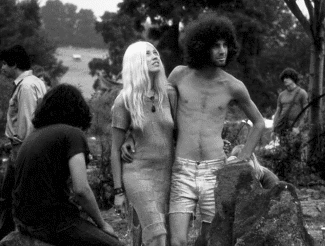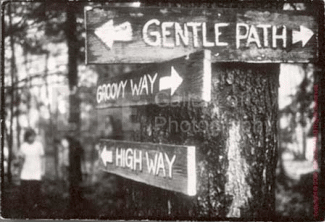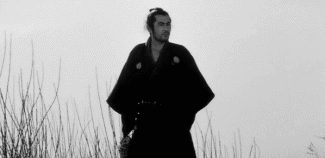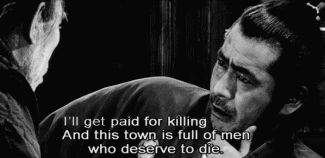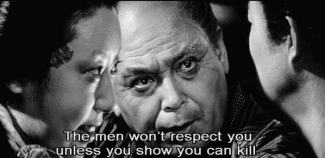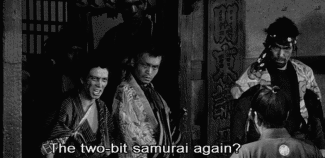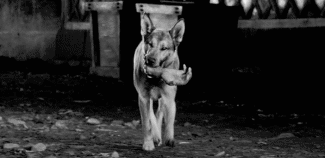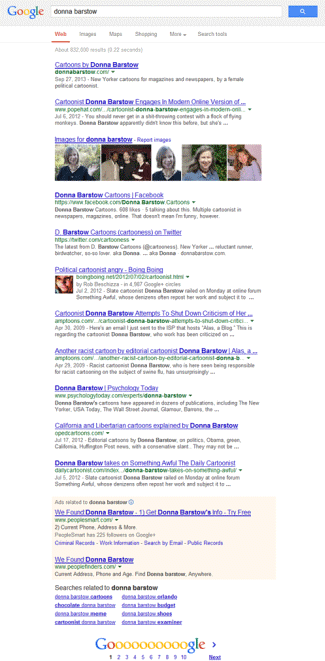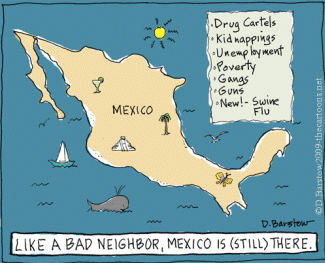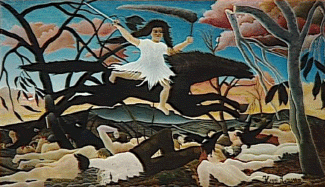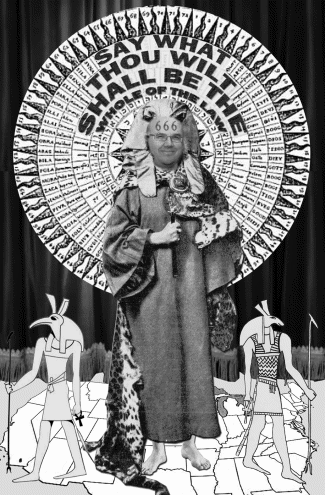Who’s Zenning Who?: Another View on Whether Susan Blackmore’s Sermon on the Way of Robotic Consciousness Was Worth Spending A Beautiful Morning Indoors With A Band of Aging Atheists One Day in Late April in Tucson, Arizona, 2014by Charles Carreon
NOTICE: THIS WORK MAY BE PROTECTED BY COPYRIGHTYOU ARE REQUIRED TO READ
THE COPYRIGHT NOTICE AT THIS LINK BEFORE YOU READ THE FOLLOWING WORK, THAT IS AVAILABLE SOLELY FOR PRIVATE STUDY, SCHOLARSHIP OR RESEARCH PURSUANT TO 17 U.S.C. SECTION 107 AND 108. IN THE EVENT THAT THE LIBRARY DETERMINES THAT UNLAWFUL COPYING OF THIS WORK HAS OCCURRED, THE LIBRARY HAS THE RIGHT TO BLOCK THE I.P. ADDRESS AT WHICH THE UNLAWFUL COPYING APPEARED TO HAVE OCCURRED. THANK YOU FOR RESPECTING THE RIGHTS OF COPYRIGHT OWNERS.
April, 2014
Sunday With the Atheists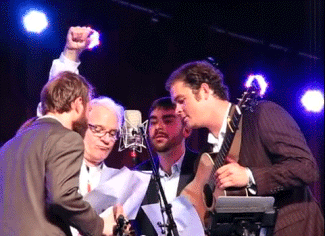
Last weekend, Sunday morning, in search of fun atheists, Tara and I went to the Free Thought Arizona Sunday meetup at Tucson’s UniversityMedicalCenter. I guess there’s enough doubt about God’s existence in the place where most folks meet their final crisis of faith that they can get together there without getting somebody’s lease cancelled. You know this is Arizona, where we almost passed a law that would’ve in short order been used to let landlords kick unwed mothers out of their rental units on the grounds that they didn’t have to rent to people who obviously didn’t adhere to the same religious tenets as the landlord. So I felt kind of lucky to be able to gather under any anti-God banner at all, and awaited the appearance of the featured speaker with eager anticipation.
The un-service was kicked off by a chirpy, tall woman with a cap of silver hair attractively styled, with a confident manner of speaking that suggested no one ever interrupts her. She introduced us to the “Three Wise Men” of the day, who all had either smart noggins that they’d put to work to bring lucre into the FTA treasury, or were wealthy donors whose generosity was measured in five figures. Disappointment number one — when I was known as a Buddhist, I tried to be a generous Buddhist, and always figured if I wanted someone to like my religion, I shouldn’t charge them for it. So I found it somewhat disenchanting when my fellow Buddhists chased after wealthy donors and influential names, as if the Buddha would have interviewed for a position as Steven Seagal’s guru. I was hoping that un-religion would be un-funded, but alas, it appears to require an institution as well. And even though I don’t have a female body, I thought the choice of three wise men to be both anachronistically patriarchal and disturbingly allusive to Judaeo-Christian dogma. What, I wondered, do we gain by drawing analogies from the adversary’s lexicon?
My sense that I was at a boot camp for people who might be working to outgrow the bad habit of spending Sunday morning on their knees grew stronger as we were treated to a multi-fella acapella un-hymn for un-believers lead by celebrity atheist Steve Martin, courtesy of a slightly grainy YouTube video presented by a big, experienced atheist with a laptop. He and his wife then lead us in a singalong of the karaoke version of "This Land Is Your Land," from which Hollywood excised the activist content:
As I was walkin’ I saw a sign there
And that sign said “No tresspassin’”
But on the other side, it didn’t say nothin’
Now that side was made for you and me
In the squares of the city / In the shadow of the steeple
Near the relief office, I see my people
And some are grumblin’ and some are wonderin’
If this land’s still made for you and me
I'd have enjoyed singing those lines, but didn't have the opportunity, so I sang the ones that were displayed on the screen, feeling a little more like a sap with every saccharine verse. Who, I began to ask myself, were these people who thought this was a good thing to do on Sunday morning? I mean, I had a good time, because Steve Martin is sweet and funny, and singing out loud never killed anybody, but our friend Ramzi seemed uncharmed. He'd come with us because he was game for a new kick, but it looked like the novelty had worn off instantly. Ramzi later explained to us that they lost him when the first wise man's commendable activity was revealed to be getting the FTA on the list of nonprofits that get a cut from the Fry's VIP Card program. An old-school, natural food aficionado, Ramzi is not a Fry's shopper, so for him it was like being teleported into a crowd of the terminally nikulturni. Next there would be a WalMart promotion. Deal Ramzi out.
A Willing Crowd Awaits
Once they’d gotten the crowd’s blood moving with the singalong, they unleashed Susan Blackmore on us. Elfishly styled in pixie-type boots with snug pants and a form-fitting jacket that revealed a pleasing figure of the short Englishwoman type, Susan bounded about the stage with a lot of zip for a gal whose hot twenties are somewhat behind her. Like a lot of corporate trainers and salespeople, she had all the right moves. Her speech lined up with her posture and her facial expression. She tossed off a few self-deprecatory jokes. She looked at the audience and claimed us as her own. I felt no twinges of resistance in the audience. The pre-talk PR had clearly done its work, and Susan was drafting along in its wake, an expert with a topic and a room full of people who needed her knowledge to justify their atheist mindset and make it credible.
A One-Eyed Buddha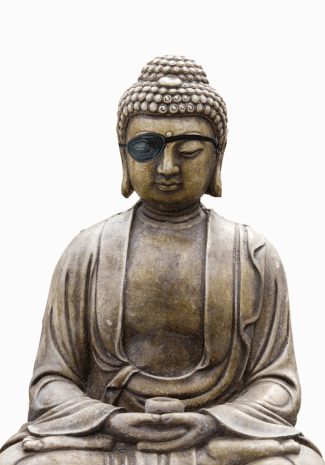
When you need a ride somewhere you’re often not particular how you get there. And people who have gone straight from Christian or Jewish religion to unbelief, are poorly equipped to examine the legitimacy of Susan’s claims about “Zen Buddhism,” to which she first claimed to be devoted, then later said she was not. I’ll agree with her second position.
Susan’s thesis for the day was revealed incrementally, so my surprise grew as she moved from one misstatement about Buddhism to the next, using the “nonexistence” side of Buddha’s argument to argue that really smart people don’t believe in their own existence. This was like poking out one of the Buddha’s eyes and saying that he had no depth perception, and believed all life to be two-dimensional. The Buddha didn’t say people don’t exist.
One of the most popular Zen scriptures is the Diamond-Cutter Sutra, i.e., a Discourse on the Penetration of the Impenetrable. In Chapter Six, the Buddha explains that people who understand the Dharma “neither fall back to cherishing the idea of things as having intrinsic qualities, nor even of things as devoid of intrinsic qualities.” Buddha then explains to his friend Subhuti why real Buddhists don’t say that people and things either exist or don’t exist:
“Wherefore? Because if such people … grasped and held on to the notion of things as having intrinsic qualities they would be cherishing the idea of an ego entity, a personality, a being or a separated individuality. Likewise, if they grasped and held on to the notion of things as devoid of intrinsic qualities they would be cherishing the idea of an ego entity, a personality, a being or a separated individuality. So you should not be attached to things as being possessed of, or devoid of, intrinsic qualities.”
What does this really mean? That if you are looking for answers to “existence” and “nonexistence” from the Buddha, you are barking up the wrong lotus blossom. Buddha was not teaching physics, physiology, or even philosophy or psychology. He was not pronouncing on the “reality” of our humanity, our planet, our solar system, or our galaxy, if you could even define the term “reality” in a satisfactory fashion. Buddha was teaching his way of “ending human suffering.” His philosophy is an integrated package of knowledge that it is dangerous to mine for clever quotes that support views opposed to the Buddha’s true intentions.
I, Bundle
Susan told us she had spent a lot of time asking herself the question “Who am I?” She seemed confident that she was one of a small group of people who had done this. She then took us on an odyssey of self-disassembly. Like Alan Watts enjoyed doing, Susan poked fun at the notion that there’s a “little person in your head,” a “homunculus,” as she put it, who experiences everything we see, feel, hear, smell and touch. She showed us powerpoint graphics of the brain marked up like a side of beef, all the choice cuts exhibited to show there’s no little person here, in the cerebral cortex, or the cerebellum, thalamus, hypothalamus, etcetera. This was really rather frivolous, for what person really expects to find a “self-center” anywhere in their physical corpus? That’s like expecting to find a sign posted on the sun, giving its galactic address. Not bloody likely.
Susan argued that Buddha taught that human consciousness is composed of a “bundle” of psychic factors. She never actually told us what that bundle is composed of though, whereas the Buddha was very clear that the personality bundle is comprised of five factors that act together to create the “experience of I.” Understanding how those factors in the personality bundle interact is actually a meditative process that allows a person to observe their own mind. Self-observation reduces automatic reactions within the personality bundle and frees one from unconscious action. Put simply, in Buddhism, understanding one’s personality to be composed of factors is not presented as an assault on the personality, but as part and parcel of the practice of seeing reality.
Susan blurred the concept of the personality bundle by pairing it with Buddha’s example of how a carriage is not intrinsically a “carriage,” since it is simply assembled from a frame, wheels, and axles. That is a good way to understand the component nature of a carriage, but unless Frankenstein was fully human, there is a great deal more to a human being than meat and bones and brains, and thus it is useless to analogize a human being to a carriage that is made solely of physical parts. The analogy cannot account for the most important aspect of a human being, because no carriage ever drove itself where it wanted to go, or refused to roll downhill by applying its own brakes, or ran down a child in the street because it was inattentive.
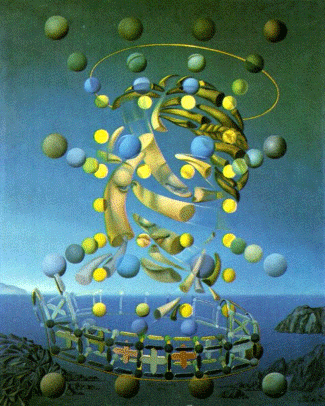
As Einstein is said to have said, “Things should be made as simple as possible, but not simpler.” When you analogize a human being to a machine, you make it too simple to draw conclusions, and those conclusions are likely to be dehumanizing and dangerous. Among her fun “thought experiments,” Susan asked us how many of us would consent to be teleported, and asked one volunteer where she’d like to go. The volunteer said “Cabo,” as in “Cabo San Lucas,” the tequila sinkhole at the bottom of Baja, but Susan heard “Kabul,” the heroin capital on the roof of the world. This affected the outcome of the thought experiment in unforeseen ways, but it shouldn’t have, because the whole point was to determine whether people who saw themselves as “egos” rather than “bundles” would refuse teleportation, regardless of the assurance that all of our physical elements would be reconstituted into a person indistinguishable (in either Mexico or Afghanistan) from the one who had been teleported from Tucson. Of course, if you were blown up on arrival in Kabul, or hit by a an exploding tequila shooter in Cabo, it might all come to the same thing, but Susan’s point was that people who robustly conceived of themselves as bundles would more readily accept the new form of transport. According to Douglas Adams, the resistance to teleportation runs much deeper, as he made absolutely clear with this blast of doggerel:
And what about matter transference beams? Any form of transport which involved tearing you apart atom by atom, flinging those atoms through the sub-ether, and then jamming them back together again just when they were getting their first taste of freedom for years had to be bad news.
Many people had thought exactly this before Arthur Dent and had even gone to the lengths of writing songs about it. Here is one that used regularly to be chanted by huge crowds outside the Sirius Cybernetics Corporation Teleport Systems factory on Happi-Werld III:
Aldebaran’s great, okay,
Algol’s pretty neat,
Betelgeuse’s pretty girls
Will knock you off your feet.
They’ll do anything you like
Real fast and then real slow,
But if you have to take me apart to get me there
Then I don’t want to go.
Singing,
Take me apart, take me apart,
What a way to roam
And if you have to take me apart to get me there
I’d rather stay at home.
Sirius is paved with gold
So I’ve heard it said
By nuts who then go on to say
“See Tau before you’re dead.”
I’ll gladly take the high road
Or even take the low,
But if you have to take me apart to get me there
Then I, for one, won’t go.
Singing,
Take me apart, take me apart,
You must be off your head,
And if you try to take me apart to get me there
I’ll stay right here in bed.
Some Negative Implications of Seeing Humans As Machines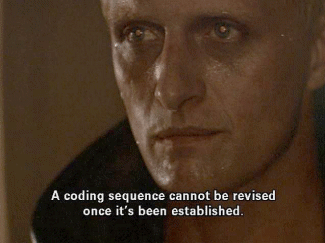
Why does the notion that human beings are machines so fascinate people? On an industrial scale, equating people and machines is good business, because we only need people for the work they do. A backhoe digs a ditch, thus accomplishing what many ditch-diggers would otherwise do. Treating the ditch-diggers as inefficient, costly machines, I fire ten ditch-diggers and get a backhoe on the job. It’s better for my wallet, and since I cannot experience the mental suffering and hunger of the unemployed, I need not care that the ditch-diggers go hungry. This kind of logic rules our society, to the point where we are now supposed to feel encouraged if “the economy is improving,” even if we ourselves are living behind a dumpster. A rising tide will lift all boats, ya’ know?
All ditch-diggers understand the fallacy of the industrialist argument that they are irrelevant, because it ignores their subjective being, the primary thing that distinguishes us from machines. So you’d think we’d be more resistant when people try to analogize our minds to machines, because a mind is the one thing a machine does not have. I am constantly amazed that people would analogize a video recorder attached to a computer to an eye attached to a human brain. Fercrissakes, the video never swings around to take a second look at a hot body, nor does it flinch when focussed on a gruesome scene, or close its eyes to block off a painful scene. That’s the important thing, not the fact that the CMOS sensor functions somewhat like the human retina!
The real damage to our self-understanding occurs when, having analogized ourselves to machines, the analogy takes over, and we start to make mechanistic inferences about ourselves. So not only is this analogy not very useful, because we learn little about humans by analogizing them to machines, but it also tends to project itself back upon our self-image, causing us to define our motivations in mechanical terms. There is absolutely no evidence that any good comes of this type of self-image. If I may indulge myself, “Garbage in, garbage out.”
The AI crowd, of course, want to analogize our minds to computers. For people who are equally ignorant about how computers and their own minds work, this analogy will be appealing. Because “any sufficiently advanced technology will appear to be magic to those who do not understand it,” for those ignorant of cybernetic science, computers are essentially magic. I hear people saying all the time that their computer “knows” something, when in fact it is just a sophisticated alarm clock with a very complicated schedule. Most of the time, in fact, our computers are triggering Pavlovian responses with little beeps and chirps that “keep us on track,” which is to say, in time with the industrial Leviathan that winds all the clocks.
Meditation vs. Annihilation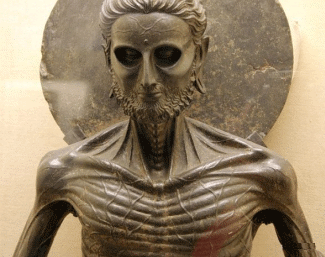
Susan backed up her discussion of the “Who am I?” question with the declaration that she was a Zen Buddhist, so I assumed that she had practiced the “Who am I?” meditation that is taught to both Buddhists and Hindus. But Susan appears to have misapplied the “Who am I?” practice, turning it from a path of self-discovery into one of self-negation.
Perhaps much of this confusion would have been avoided if someone had told Susan that if you are pursuing the “Who am I?” inquiry for spiritual purposes, then when you ask yourself “Who am I?” you are not supposed to articulate a verbal answer. The Tibetans call it a “pointing out instruction.” I would analogize it to being out hiking with a friend, who points at something way across the canyon, and says, “look right there.” You try and look where they’re pointing. When at last you are able to pick out what they’re telling you to look at, then you don’t need any further instructions. You actually see it, whereas before you didn’t, and you don’t need anyone’s help to know what it is. In the case of looking “inside,” you don’t actually see anything visual. Rather, you have the experience of knowing that you’re knowing. It’s very life-affirming, in a quiet way. Indeed, how anyone who’s ever done the practice would seriously get up and say, “I don’t exist” is quite beyond me. It would just be laughable, absurd, a joke.
The pre-eminent advocate of the “Who am I?” school of self-discovery was an Indian prep-school dropout who took up residence at Arunachala Hill, a place sacred to Shiva, about a century ago. Known today as Ramana Maharshi, he was fourteen when he got to thinking about how one of his uncles had died, and fell into a terrible fear that he was also about to die. He then lay on the floor and imagined he was dying, taking note of all the experiences he would not have anymore, eliminating everything that had died, until at last he remained with his own original being. His perception of the world distinct from himself disappeared. He entered into another way of being, no longer separate from “others,” whom he saw as the Self. In his dialogues with students, Maharshi deflected the projections of guruhood, insisting that he was not anyone’s guru, and recommending “self inquiry” for anyone who seeks inner peace. His questionings of spiritual seekers are demonstrations of Maharshi’s subtle skill at turning every question into another expression of the question “Who am I?” It was literally not possible to talk to the man without him trying to enlighten you as to your Identity.
Compare that with Susan Blackmore — quoting the Buddha on your nonexistence, polling neuroscientists for odds on whether you’re a robot, and insisting cheerily, when pressed on what the “no-self” theory of human Identity would do to our notions of human rights, that “Governments will give us rights!” Yeah, I guess that’s how we’d get ‘em, if we don’t exist. Because if we don’t exist, we can’t “take these truths to be self-evident.” And therefore, we couldn’t decree that “all men are created equal” and are equally entitled to “life, liberty and the pursuit of happiness.” Wonderful! (Not!)
We’re From the Government, We’re Here To Help
The political implications of Susan Blackmore’s thesis are indeed dreadful, and it seems obvious that she has not contemplated them in any depth. To simply advert to the notion that “governments” will “grant rights” to people who don’t exist, whose Identity is illusory, and who have abdicated their right to exist, is hardly realistic. To give Susan her due, however, her fellow Englishman Edmund Burke promised much the same when he argued that since his ancestors had sworn fealty to the Kings of William and Orange, he could look to the monarch for protection. He would have argued the point against Thomas Paine’s opposition, on the deepest principle, that the only legitimate government is that which is by the consent of the governed.
The technocrats who control our lives and determine the fate of the planet will be delighted to hear of this scientific development — the discovery that human beings do not actually exist. Complaints from the governed will have no grounds on which to be heard. Tom Paine’s ghost will be put to rest. Statistics will no longer hide a human story. When human rights are violated it will be a misdemeanor, and the good of all can finally be determined on the basis of bloodless calculations.
Whence Cometh This One, and With What Aim?
As an evangelist for the path of exploding our own existence, Susan excels at making something out of nothing. Plucking quotes and conclusions from popular spiritual and scientific authorities, assembling notions that suit her own fancy, and modeling confidence in her own conclusions, Susan’s mind is dangerous territory for those unfamiliar with her jargon and susceptible to her manner. As the capper for her presentation of scientific-style evidence, Susan displayed a reaction-time study that showed that when a person intends to move, they start moving before they can tell you that they’re about to move. From that, Susan blithely drew the conclusion that “free will is illusory.” The best thing about it was the confidence with which she enunciated this absurdity. For a second there, before I got all my physiological responses in order, I thought she’d actually made a point. She’s a pro, that Susan Blackmore.
You gotta wonder, and I do, what the heck is so important about nihilism that we gotta put this gal out on the road to push it? Well you know, it doesn’t exactly sell itself.



